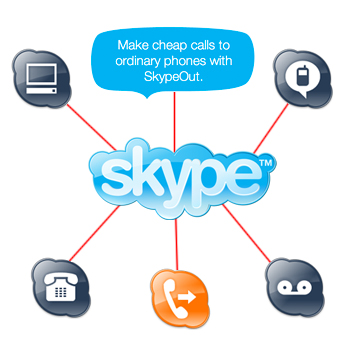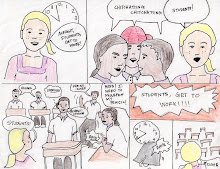Sunday, April 25, 2010
iMovie - NETS 3
A one-minute Public Service Announcement on hate crime at CSUSM demonstrating proficiency in iMovie.
Copyright - NETS 4
A Collaborative research/information paper/future resource on Copyright Issues/Internet Safety created using GoogleDocs.
Copyright-Internet Safety EE
Copyright-Internet Safety EE
Inspiration - NETS 3
Mind-map of projects meeting NETS-T from EDUC 422 creating using collaborative, visual organizational software.
Journal 9 - Playing with Skype - NETS 5
Weller, Travis. (2010). Playing with Skype. Learning & Leading with Technology 37(6). Retreived from http://www.iste.org/AM/Template.cfm?Section=March_April_No_6_1&Template=/MembersOnly.cfm&NavMenuID=4516&ContentID=25508&DirectListComboInd=
This article is about a teacher who used Skpe to bring composers of school band music to connect with the students who play his/her music. He first invited a freelance musician and licensing agent into the classroom for 45 minutes using Skype to discuss copyright laws, the music business, and censorship. Later, he had the idea to use Skype at a live concert.
The equipment needed to “skype” for an audience at a concert is minimal, according to the author: a computer with a broadband Internet connection, a data projector, a couple of microphones, a webcam, some adapters for audio, and a projector screen. He obtained this hardware for his school through a grant. He utilized local college students, and the technology coordinator at the school.
Three noted composers were brought to the concert via Skype. The composers introduced their pieces before the student ensembles performed them. This turned into an interactive conversation that made for a richer educational experience that was well worth the time it took to coordinate.
This was all done using a free version of Skype found on the website. Two of the composers were first time users of Skype and had no problems.
Skype makes it possible to bring experts into the classroom. It widens the possibilities for students.
What if something goes wrong? It seems a bit risky to me to use it at a concert. Of course, there are lots of factors that make it less/more risky. Interesting, also, that two of the composers had never used Skype before, but seemingly easily agreed. I have used it once, and recently had a friend in Azerbaijan ask if we could use Skype.
How open are “experts” to sharing their time and knowledge in the classroom? I wonder if some experts just consider themselves “too busy” or if some would turn down the opportunity because of their own lack of familiarity with the technology? I think it is great for expanding the walls of the classroom though.
Journal 8 - Navigate the Digital Rapids - NETS 5
Lindsay, Julie & Davis, Vicki. (2010). Navigate the Digital Rapids. Learning & Leading with Technology, 37(6), Retrieved from http://www.iste.org/Content/NavigationMenu/Publications/LL/LLIssues/Volume3720092010/MarchAprilNo6/Navigate_the_Digital_Rapids.htm
This article is about teaching digital citizenship in an age when technology changes so quickly. Digital citizenship, according to the article, is more than literacy, but being able to effectively understand technology trends, monitor uses in school, avoid fear, and empower student-centered learning.
Part of technology is the ability to customize. This also influences curriculum in schools. The authors encourage teachers that customized learning and national standards can coexist. Teachers should mix digital technologies in a variety of ways to create student-centered, globally connected learning experiences. This starts with being educated about technology as a teacher, especially in the use of web 2.0 tools, such as wikis, and blogs.
The second tip from the article is to “monitor and be engaged.” Educational networks are professional environments, not like social network sites. Students and teachers must understand the differences and conduct themselves in an appropriate manner with appropriate avatars, styles of language and quality of material. Teachers must monitor for “textspeak” and other inappropriate material. Teachers must lead by example and coach students about responsibility. Teachers must monitor all online collaborative and networking sites.
When a teacher discovers inappropriate content posted by another student, they should document it, share it with the student’s classroom teacher, and have it removed by administrators. The classroom teacher will decide an appropriate disciplinary action such as having the student apologize online, or banning them from the network. Usually, student intent is not offense. The authors have banned fewer than 10 of 3.000 students in the last three years.
Realize that getting started may be the most difficult part; don’t give up too soon. Remember, others have gone before, and can help guide the way. Also, remember that “off-topic” conversations can create learning, too.
We should educate students on digital citizenship as soon as they start using digital tools. Privacy levels should be age appropriate. Also, remember that “off-topic” conversations can create learning, too. Consider not deleting a student’s academic legacy. In the future, colleges may be requesting e-portfolios.
What are some of the disadvantages to the use of technology? No potential disadvantages were discussed in this article. Yes, there is the possibility of inappropriate content being posted, but that is really not that different from a student making an inappropriate comment in class or elsewhere on campus. Expense can sometimes be a factor in technology, but I was wondering about the possible adverse affects of the impersonal nature of technological mediums, and the perhaps greater ability to cheat. Also, one thing that has not been brought up in teaching students about dealing with technology is stewardship of the device itself and of their own bodies re: posture, carpal tunnel etc.
What are the advantages to having students create digital footprints/an academic legacy online? What a way to streamline interview/transfer procedures etc. Plus, students have access to previous materials and projects for building on those thoughts and ideas in new classes.
Subscribe to:
Posts (Atom)







